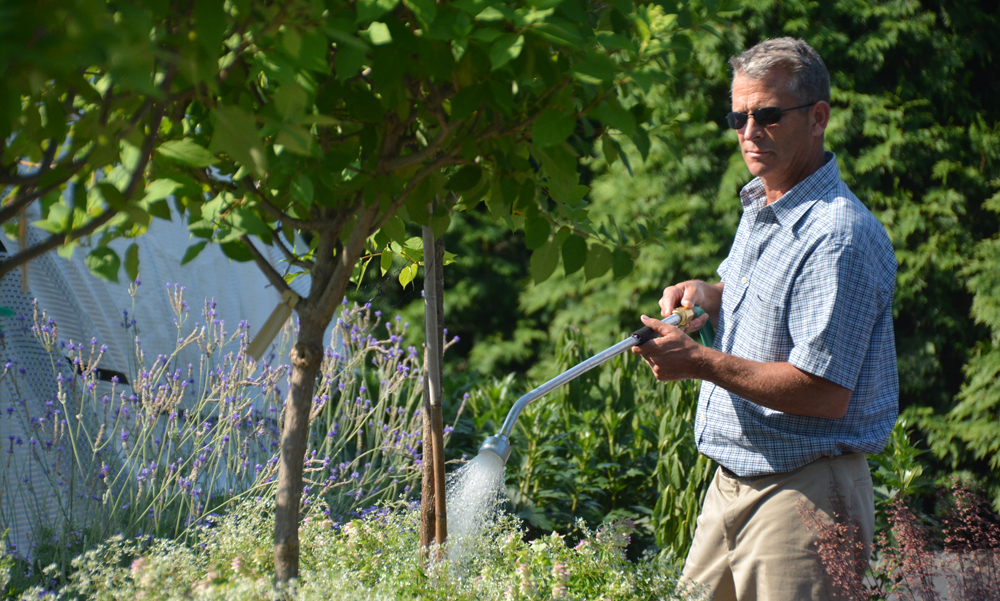
Watering Your Home Outdoor Plants Like a Pro!
Having a beautiful garden or a collection of outdoor plants is a delight for any homeowner. However, maintaining healthy and vibrant plants requires proper watering techniques. Watering your plants correctly can make a significant difference in their growth and overall health. Below, we will explore six essential tips to help you water your home outdoor plants like a professional.
Watering timing
The timing of watering plays a key role in maintaining healthy plants. Watering your plants early in the morning is generally the best practice. At this time, the temperature is cooler, and there is less wind, allowing water to be efficiently absorbed by the plant’s roots. Avoid watering during the hottest part of the day as the water may evaporate quickly, resulting in insufficient hydration for your plants. Watering in the evening can leave the foliage wet overnight, increasing the risk of fungal diseases.
Using proper technique
Adopting proper watering techniques ensures efficient water distribution and encourages deep root growth. Instead of shallow, frequent watering, it is better to water your outdoor plants deeply and less frequently. This encourages roots to grow deeper into the soil, making the plants more resilient to drought conditions. Apply water slowly and evenly to allow the soil to absorb moisture without a runoff. If using a sprinkler, adjust it to a fine mist to prevent soil erosion and excessive water pooling. With a garden hose, try to get everything watered even. This way, your plants are sure to blossom and stay healthy throughout the season.
Conserving water
Conserving water while watering your plants is not only environmentally friendly but also cost-effective. One effective way to save water is by mulching. Adding a layer of organic mulch around your plants helps retain soil moisture by reducing evaporation and suppressing weed growth. Consider collecting rainwater using barrels or containers as well if you live in a dry climate. Rainwater is natural and better for your plants than tap water. Reusing household water, such as water from cooking pasta or washing vegetables, is another smart way to reduce water waste.
Monitoring moisture
Regularly monitoring the moisture level of your plant’s soil is essential for their health. Stick your finger about an inch into the soil near the root zone to check for moisture. If it feels dry at this depth, it’s time to water. However, if the soil feels damp, hold off on watering as overwatering can suffocate the roots and promote the growth of harmful microorganisms. Invest in a moisture meter or learn to observe the signs of plant stress, such as drooping leaves or discolored foliage, which indicate a need for water.
Understanding plants’ needs
To water your outdoor plants effectively, it’s crucial to understand their specific watering requirements. Different plants have different moisture needs, and factors such as plant species, size, and weather conditions affect their water intake. Research and identify the watering needs of your plants, considering their native habitats and environmental preferences. This knowledge will help you determine the right frequency and quantity of water for each plant. When watering, focus on the root zone rather than the leaves. This ensures that water reaches the plant’s root system where it is most needed. Use a can or a drip irrigation system to apply water to the root parts, minimizing waste and evaporation. If you have a big garden, using a retractable garden hose can come in handy. After watering, you won’t need to waste time getting the hose back in its place.
Adjusting for changing weather
Adapting your watering routine to changing weather conditions is crucial for the optimal growth of your plants. During hot and dry periods, you may need to increase the frequency of watering to compensate for increased evaporation. On the other hand, during cooler and rainy seasons, you should reduce watering to avoid waterlogged soil, which can lead to root rot. Being mindful of weather patterns and adjusting your watering schedule accordingly ensures that your plants receive the right amount of moisture at the right time.
Conclusion
Watering your home outdoor plants like a professional requires knowledge, observation, and a few key techniques. By understanding your plants’ watering needs for starters, you can know how much to water them. Also, timing your watering sessions appropriately and using proper watering techniques can help you maintain the health and vitality of your garden. Remember, watering your outdoor plants like a pro not only benefits their growth but also allows you to enjoy a beautiful and thriving garden all season long.



